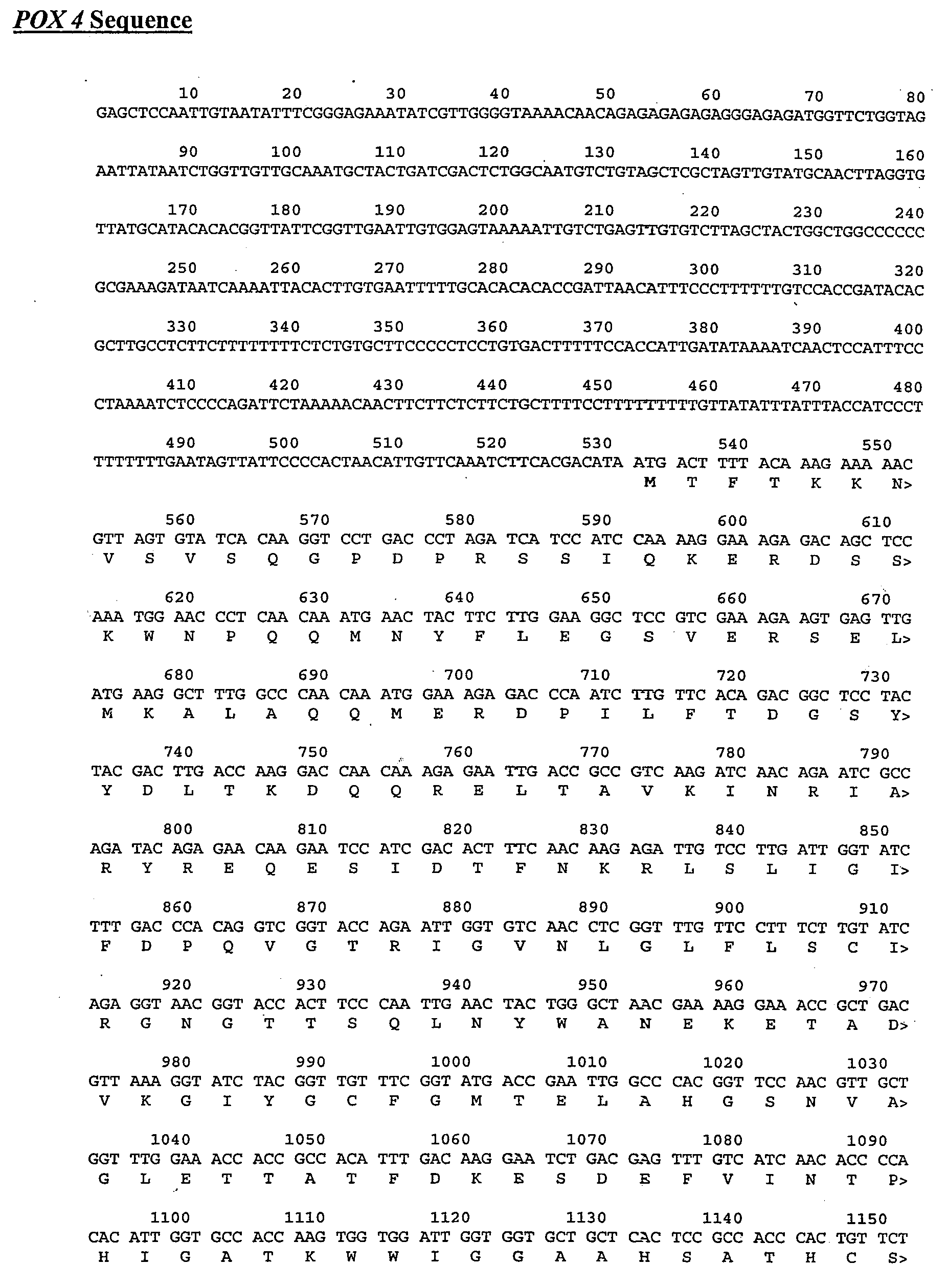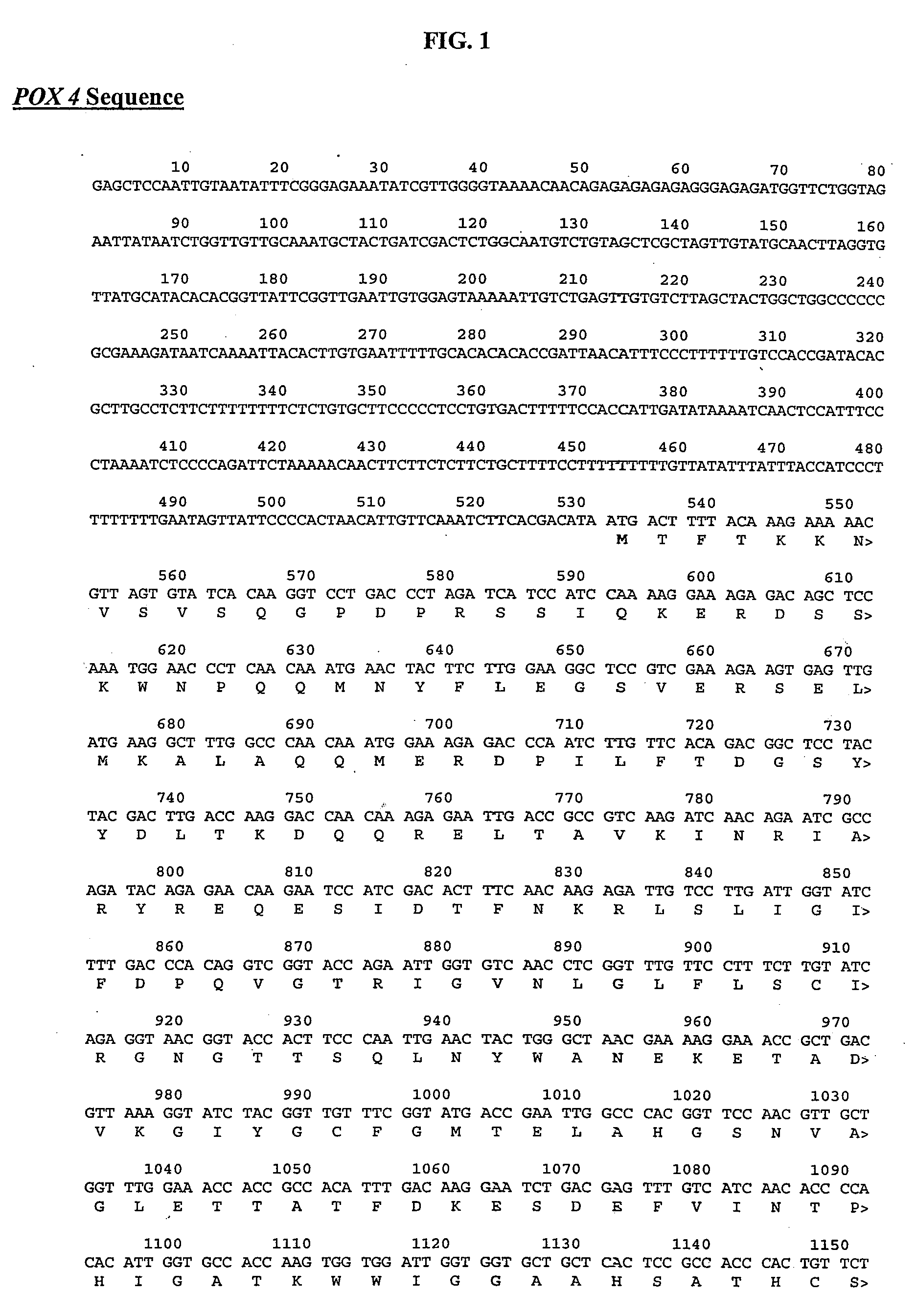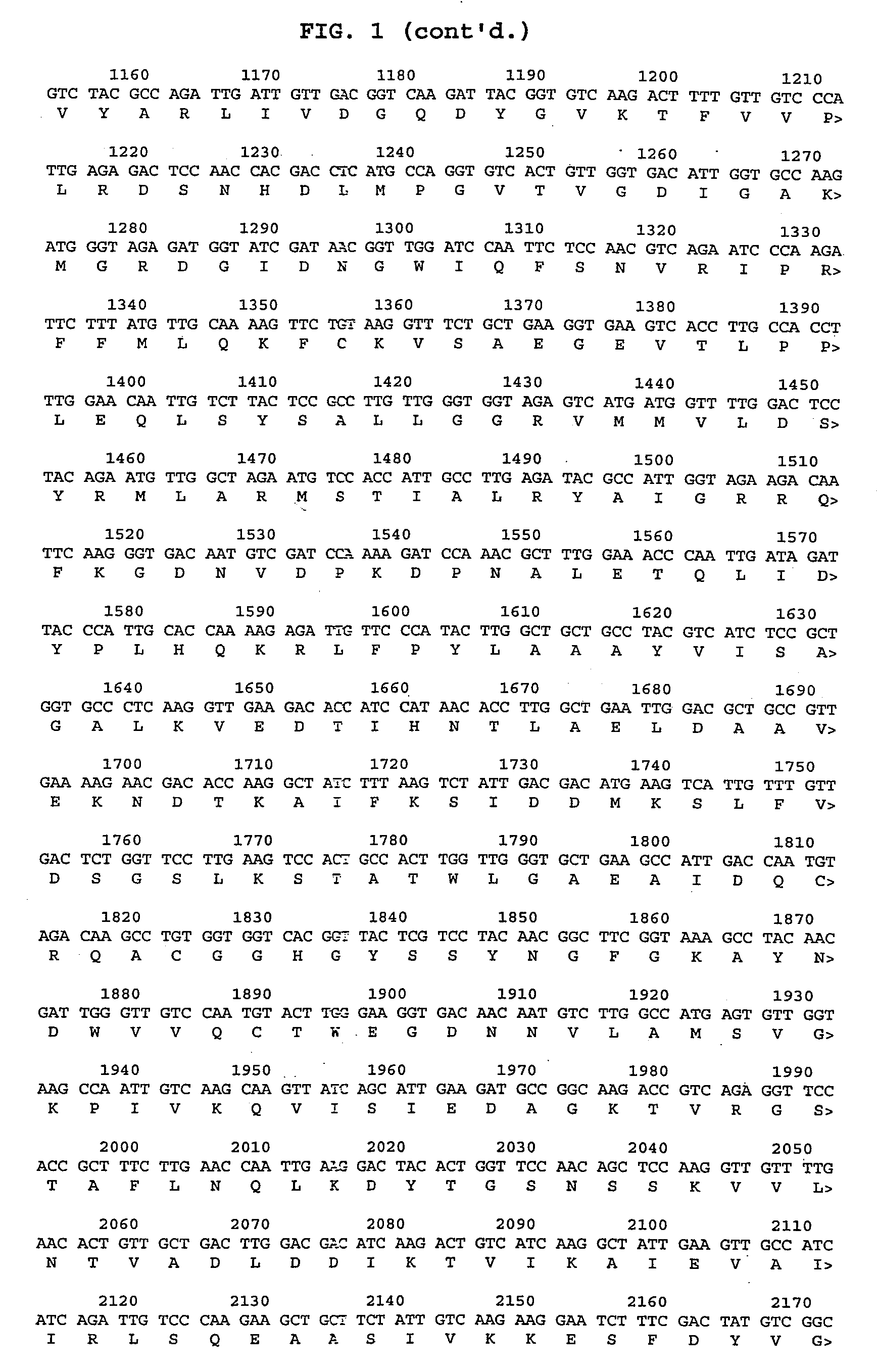Non-revertible beta-oxidation blocked candida tropicalis
a technology of candida tropicalis and beta-oxidation, which is applied in the field of non-revertible beta-oxidation blocking candida tropicalis, can solve the problems of difficult synthesis, long purification steps, and short chain lengths, and achieve the effect of increasing quantitative yield and specific productivity of substantially pur
- Summary
- Abstract
- Description
- Claims
- Application Information
AI Technical Summary
Benefits of technology
Problems solved by technology
Method used
Image
Examples
example 1
Generation of POX 4 Flanking Sequences
[0047]In order to generate the POX 4 flanking sequences to direct integration of the disruption cassette, two sets of PCR primers were designed.
Set #1(5′ to 3′)(SEQ ID NO: 1)218-27a-AGGCGCGCCCCATCCAAAAGGAAAGAGACAGC(SEQ ID NO: 2)218-27b-CCTTAATTAACGTCAACAATCAATCTGGCGTAGACSet #2(5′ to 3′)(SEQ. ID NO. 3)218-27c-CCTTAATTAATCACGGTTACTCGTCCTACAACGG(SEQ. ID NO. 4)218-27d-AGCTTTGTTTAAACGCAGCGGTTTCATCAGACTTTTC
[0048]PCR fragments of these two flanking sequences were purified, restricted with AscI, Pad and PmeI restriction enzymes (Ascl and Pad for the Set #1 fragment, and PacI and PmeI for the Set #2 fragment) and ligated to a gel purified, QiaexII cleaned AscI-PmeI digest of plasmid pNEB193 purchased from New England Biolabs (Beverly, Mass.). The ligation was performed with an equimolar number of DNA termini at 16° C. for 16 hours using T4 DNA ligase (New England Biolabs). Ligations were transformed into E. coli XL1-Blue cells (Stratagene, LaJolla, Calif...
example 2
Generation of a URA 3 Selectable Marker
[0051]A primer set was made to amplify a 1676 base pair URA 3 containing PacI restriction sensitive cloning sites.
(5′ TO 3′)(SEQ. ID. NO: 5)Primer 179a-CCTTAATTAAGCTCACGAGTTTTGGGATTTTC(SEQ. ID. NO. 6)Primer 179b-CCTTAATTAATGGATACCTTCAAGCAAGTG
[0052]Primers were designed and synthesized based on the 1712 by sequence of the URA 3A gene of C. tropicalis 20336 (see FIG. 2). Primers 179a and 179b described above were used in PCR with C. tropicalis 20336 genomic DNA to amplify URA 3A sequences between nucleotides 9 and 1685 as shown in FIG. 2. These primers were also designed to introduce a unique PacI restriction site into the resulting amplified URA 3A fragment. PCR fragments of the URA 3A gene were purified, and restricted with PacI restriction enzymes. The resulting vector possessed a 1676 by (647 by promoter, 803 by ORF and 226 by UTR) URA 3 selectable marker gene with PacI restriction-sensitive cloning sites.
example 3
Creation of a pox4-Deleted Disruption Construct
[0053]In order to make this disruption construct, the 1676 by URA 3 selectable marker gene with Pad restriction-sensitive cloning sites produced in accordance with Example 2 was cloned into the PacI restricted and dephosphorylated pNEB193 vector containing the POX 4 flanking fragments produced in accordance with Example 1. In a preferred aspect of the present invention, no foreign DNA other than that specifically provided by synthetic restriction site sequences was incorporated into the DNA which was cloned into the genome of C. tropicalis, i.e., with the exception of restriction site DNA only native C. tropicalis DNA sequences were incorporated into the genome.
[0054]The PacI restricted pNEB193 vector containing the POX 4 flanking fragments produced in accordance with Example 1 was digested with Pad, Qiaex II cleaned, and dephosphorylated with Shrimp Alkaline Phosphatase (SAP) (United States Biochemical, Cleveland, Ohio) according to th...
PUM
 Login to View More
Login to View More Abstract
Description
Claims
Application Information
 Login to View More
Login to View More - R&D
- Intellectual Property
- Life Sciences
- Materials
- Tech Scout
- Unparalleled Data Quality
- Higher Quality Content
- 60% Fewer Hallucinations
Browse by: Latest US Patents, China's latest patents, Technical Efficacy Thesaurus, Application Domain, Technology Topic, Popular Technical Reports.
© 2025 PatSnap. All rights reserved.Legal|Privacy policy|Modern Slavery Act Transparency Statement|Sitemap|About US| Contact US: help@patsnap.com



